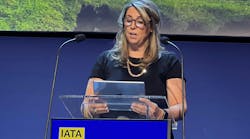With ambitious environmental goals, including a target of net-zero emissions for all American airports by 2050, the aviation industry is working diligently to reduce its carbon footprint.
A key component to these goals is the migration from diesel-powered ground support equipment to electric units.
The American Association of Airport Executives’ (AAAE) Airport Consortium on Customer Trust (ACT) tasked its Sustainable Energy and Resiliency working group to better understand energy capacity at airports and conduct a pilot study on how electric ground support equipment (eGSE) chargers are being utilized at airports.
ACT’s working group suggests airports utilize a maturity model to gain a deeper understanding of that location’s energy capacity. According to ACT, a maturity model can be used as part of an airport’s master planning and sustainability planning processes.
“A maturity model helps an airport to understand the current demands on its facilities and seeks to determine which assets are consuming energy, how much additional power is needed for electric chargers, and where the additional power will be found,” say the authors of the working group’s whitepaper published in June.
To establish a maturity model for airports, ACT’s working group developed an energy assessment to use at airports. The assessment was designed to analyze energy efficiency and identify decarbonization opportunities, taking into account systems like HVAC, lighting and building controls, among others.
“This helps to measure the area’s specific carbon emissions against the portfolio total to indicate where reductions would have the highest impact,” the whitepaper’s authors note.
According to the ACT working group, the next step in developing the maturity model was to look at how an airport measures, tracks and controls energy usage. From there, the maturity model can determine infrastructure needs by highlighting all electrification requirements, so the necessary resources can be made available.
“The final step in developing the maturity model is to validate findings through an onsite study, which could uncover more targeted decarbonization opportunities,” the whitepaper authors say.
With the maturity model in place for the pilot study, the whitepaper yielded several takeaways pertaining to eGSE infrastructure. A need for policy development and planning and an effective communication plan between airports and eGSE users were identified as key lessons learned.
Other recommendations from the pilot study included performing demand analysis per use case and working with airline tenants during the planning process.
Adopting eGSE will help airports, airlines and ground handlers meet the industry’s environmental goals. But developing the infrastructure required to support this influx in electric equipment will require cooperation between all stakeholders.
Utilizing a mature model could be the answer to ensuring the needs of all involved parties are met sufficiently.





